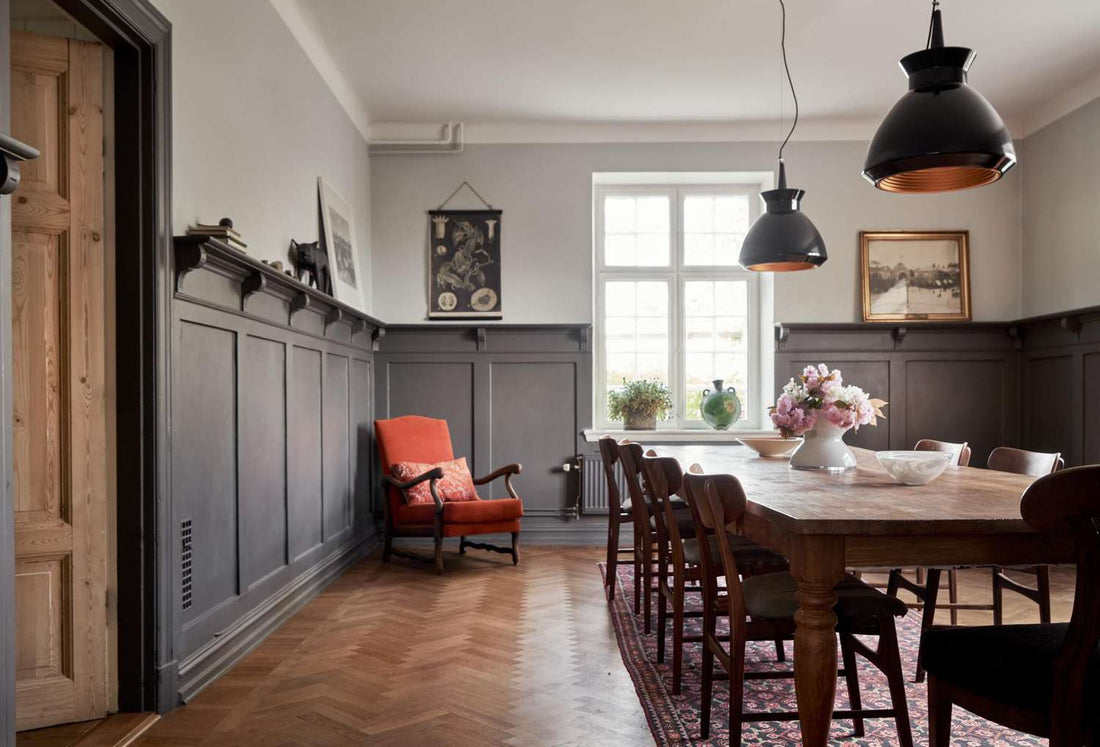
Elevate Your Home Decor: The Timeless Allure of Wainscoting
In the realm of interior design, wainscoting stands as a classic and timeless element that can transform any space. This decorative wall treatment, which involves the application of wooden panels or molding to the lower portion of a wall, has been a popular choice for centuries. In this blog post, we'll explore the beauty, history, and diverse applications of wainscoting.
The Elegance of Wainscoting
Wainscoting adds a touch of elegance and sophistication to any room. It not only serves as a protective barrier for your walls but also enhances the aesthetics of your living space. The beauty of wainscoting lies in its ability to create visual interest and add a timeless charm to your home decor.
A Brief History of Wainscoting
Wainscoting has a rich and storied history that dates back to the 16th century. Originally, it was used to insulate homes and protect walls from damage. Over time, it evolved from a practical solution to a decorative element. Here's a quick overview of the historical journey of wainscoting:
-
16th Century: Wainscoting, derived from the Middle Low German term "wagenschot," meaning "wall boards," was initially used as a form of insulation. Oak or pine boards were affixed to the lower part of the wall to keep the cold out.
-
17th Century: As homes became more refined, wainscoting started to take on a decorative role. Intricate paneling and molding designs emerged.
-
18th Century: The Georgian era saw the peak of wainscoting popularity, with grand paneling and ornate woodwork becoming a hallmark of this period.
-
19th Century: The Victorian era continued the tradition of ornate wainscoting, with richly decorated panels, chair rails, and beaded boards.
-
20th Century: In the 20th century, wainscoting became less ornate but maintained its appeal as a classic design element.
Today, wainscoting continues to be a versatile and stylish choice for homeowners, bringing a touch of history and timeless elegance to modern interiors.
Types of Wainscoting
Wainscoting comes in various styles and can be tailored to suit your design preferences. Some of the most popular types of wainscoting include:
-
Beadboard Wainscoting: Beadboard features narrow, vertical panels with evenly spaced grooves or beads. It has a charming cottage or coastal aesthetic.
-
Raised Panel Wainscoting: Raised panels are framed by decorative moldings and provide a more formal and classic look.
-
Board and Batten Wainscoting: This style uses vertical boards separated by narrow strips, creating a more rustic and farmhouse feel.
-
Flat Panel Wainscoting: Flat panels offer a more minimalistic and contemporary look, often found in modern homes.
-
Picture Frame Wainscoting: Picture frame wainscoting consists of large rectangular frames, creating a visually striking and dynamic effect.
-
Shiplap Wainscoting: Shiplap wainscoting features horizontal wooden boards that overlap, giving a coastal, shabby chic, or farmhouse appearance.
Applications of Wainscoting
Wainscoting is a versatile design element that can be used in various rooms of your home:
-
Living Room: Add sophistication and texture to your living room with raised panel or picture frame wainscoting.
-
Dining Room: Create an elegant and formal dining space with classic raised panel wainscoting.
-
Kitchen: Enhance your kitchen's charm with beadboard or shiplap wainscoting as a backsplash or on the island.
-
Bedroom: Install beadboard wainscoting for a cozy and cottage-like atmosphere in your bedroom.
-
Bathroom: Wainscoting is a popular choice in bathrooms, where it can protect walls from moisture and enhance the room's aesthetic.
-
Entryway: Impress your guests by using wainscoting to create a grand entrance in your foyer.
-
Hallways: Wainscoting can add character to long, often overlooked hallways.
Color and Finish
Wainscoting can be customized to match your color scheme and desired finish. It can be painted in a variety of colors or left natural for a warm, wooden look. The choice of finish and color can significantly impact the overall ambiance of the room.
-
White and Cream: White or cream-colored wainscoting is a classic choice that brightens and opens up a room.
-
Dark Wood: Dark wood wainscoting adds a sense of richness and depth to your space.
-
Bold Colors: You can use bolder colors to create a statement piece within your decor, such as deep blues or rich greens.
Installation and Maintenance
Installing wainscoting can be a DIY project for those with some carpentry skills, or you can hire a professional for a polished finish. Once installed, wainscoting is relatively low-maintenance. Periodic cleaning and touch-up painting may be necessary, but the overall upkeep is minimal.
In Conclusion
Wainscoting is a design element that has stood the test of time, seamlessly transitioning from its practical origins to a symbol of elegance and style. Its versatility and ability to adapt to various design aesthetics make it a timeless choice for homeowners looking to add character and charm to their living spaces. Whether you prefer the cozy, rustic feel of beadboard or the classic elegance of raised panel wainscoting, incorporating this classic feature into your home decor will undoubtedly elevate your interior design to a new level of sophistication.
